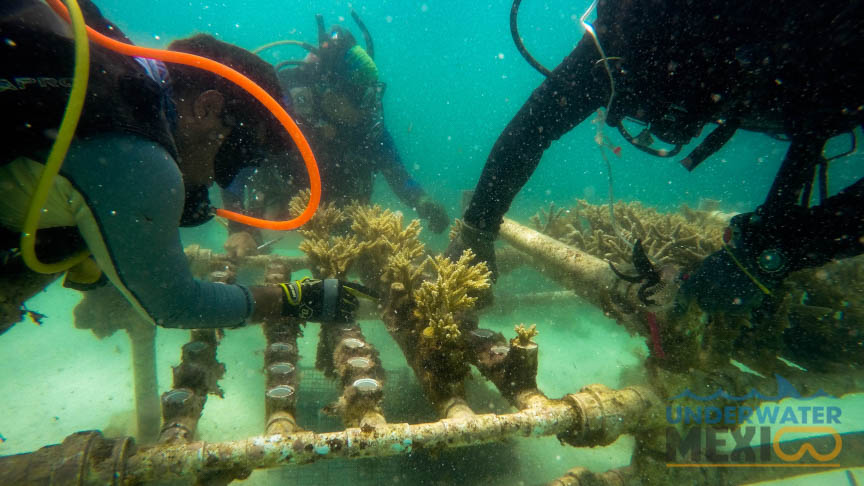Save the coral reefs
We live on a planet with a lot of water. Luckily, because that’s basically how we’re all alive. About 71 percent of the surface of the earth is covered with water, and the oceans hold about 96.5 percent of all the water on earth.
The seas support hundreds of millions of people by providing food and jobs around the globe. Ocean plants produce up to 85% of the oxygen in the air we breathe1. So, these are a lot of numbers to show how important healthy seas are for all life on our beautiful planet.
The importance of coral reefs
Corals are extremely ancient animals that evolved into modern reef-building forms over the last 25 million years. Coral reefs are unique: they’re the largest structures on earth of biological origin, and complex systems, comprising over 6,000 known species, including sea fans, sea pansies and anemones2. The Great Barrier Reef in Australia can even be seen from outer space and is the world's biggest single structure made by living organisms.
Coral reefs are often called the rainforests of the sea, because they form some of Earth's most productive and diverse ecosystems. They provide a home, food and birthing place for approximately 25% all marine species including fish, sponges, worms, shrimp, lobsters and crabs, mollusks, starfish, sea urchins, sea turtles, sharks, sea snakes and seabirds.
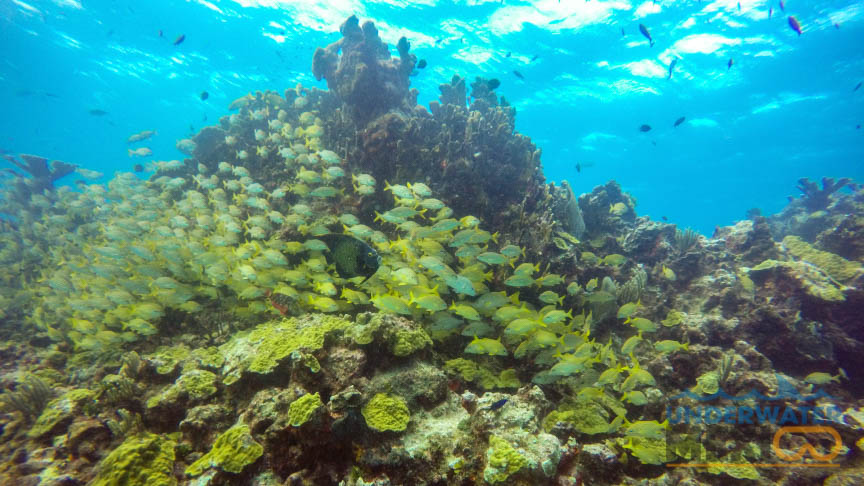
"We're an ocean planet — and if the oceans are in bad shape, so are we all."
- NASA
A very important function of coral reefs is that they protect shorelines by absorbing wave energy, they can reduce that wave energy by 97%, helping to prevent loss of life and property damage. Coastlines protected by coral reefs are also more stable in terms of erosion than those without3. Many small islands would not exist without reefs. An estimated 197 million people who live both below 10 m elevation and within 50 km of a reef consequently may receive risk reduction benefits from reefs.
Besides that, coral reefs provide income for tourism and fisheries, they create the sand for our beautiful beaches, and they even absorb carbon dioxide from the water. There´s so many reasons to protect these beautiful and vital structures.
Threats to coral reefs
Coral reefs are very fragile, because they are very sensitive to water conditions. So now, unfortunately, the reefs are dying around the world because of a phenomenon called ‘bleaching’. When water temperatures rise suddenly, algae in the corals can die, cutting off an important source of nutrients. If warming persists for several months, corals can turn white and die4. The world has already lost 50% of its coral in the last 30 years. If these bleaching events continue unabated, it's likely we could lose the rest of it in our lifetimes1. And it can all be traced back to us humans, destroying our only planet.
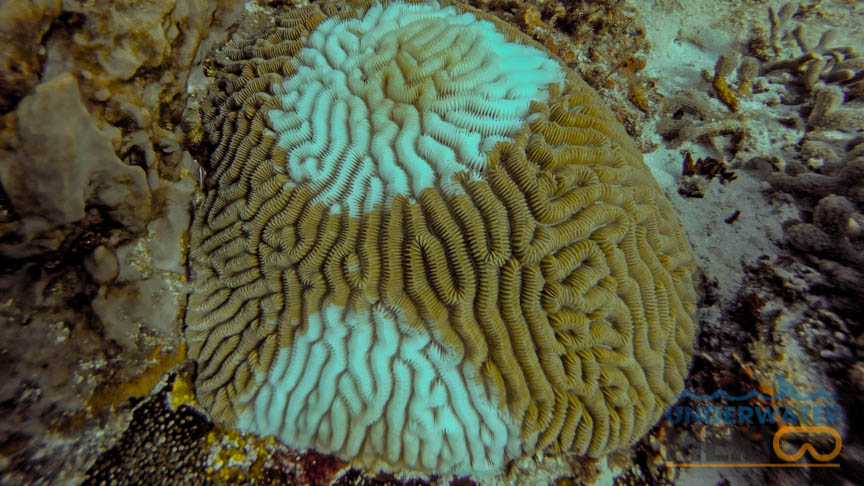
There are several causes for the bad shapes the coral reefs are in, which you can divide into local and global causes. Many of these go hand in hand, one cause leading to another.
Local, direct threats would be: coastal development (and with that destruction of nature and mangroves), pollution like runoff from agriculture or sewage from cities,
overfishing, diseases, invasive species, overuse by humans and bad practice from tourism like boats hitting the reef, people touching, scratching or contaminating the corals with sunblocks and other chemicals.
Threats on a global scale are the rise of sea temperature and sea levels, and ocean acidification, all associated with greenhouse gas emissions and global warming. Other threats include the ocean's role as a carbon dioxide sink, atmospheric changes (more storms and hurricanes), ultraviolet light, viruses, and algal blooms.
Warming and pollution also affect the amount of oxygen in the ocean in the first place. There's 2% less oxygen in the ocean now than there was in 1950, according to the new review. As waters get warmer, they're less able to absorb oxygen, leading to the emergence of ocean dead zones. Pollution creates dead zones as well1.
“If you can't breathe, nothing else matters. That pretty much describes it. As seas are losing oxygen, those areas are no longer habitable by many organisms."
- Denise Breitburg, Marine Ecologist, The Smithsonian Environmental Research Center
Is there still hope?
Nature has a great power of self-healing, but sometimes she needs a little bit of help. That's why we were so lucky to be invited by the amazing Dra. Claudia Padilla Souza from The Coral Reef Restauration Program of Quintana Roo to help with their super cool project of restoring, growing and planting corals. There are several ways to restore coral, what we did was what they call 'active intervention'. The scientists have found that by this way of 'cloning', the corals can almost double in size in a relatively short period of time, which is a lot faster than naturally happens. Six months ago, the wonderful team of The Coral Reef Restauration Program had placed a 'underwater nursery' on two different locations near Contoy Island, containing a hundred pieces of coral in each. We now went to check how much they'd grown (spoiler: a lot!) and take these grown corals and replant them close to their moms.
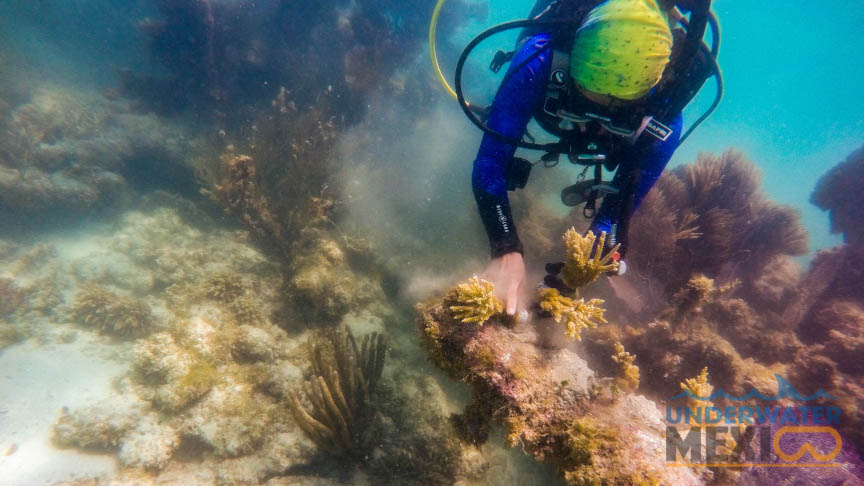
According to Dra Padilla, the new corals will bond with their families again, and merge into one big coral. Then, they would take new pieces of coral to put in the nursery and in another six months they'll repeat the process. I guess you could call it underwater coral farming.
With these projects, hundreds, maybe thousands of coral colonies on damaged reef sites can be transplanted and restored, allowing the natural inhabitants a chance to thrive. Research shows that the overall coverage of coral, and the number of species will increase. They've also shown more variety in marine life, especially fishes and functional changes in the ecosystem. All allowing for stronger and more resilient ecosystems in our ocean. Since healthy coral is a vital part of the ocean environment, restoring reefs brings great benefits to the waters here and around the world.
We are so grateful and happy to have been part of this project, and we hope we will continue to do so. To feel you're actually helping and giving back to the sea we love so much is an amazing feeling.
What can you do?
Healthy reefs lead to healthy oceans, and healthy oceans are vital to all life on Earth. We all need to take action. Everybody can contribute his or her part, even small, everything helps. It can be really simple things, like: don't go in the water with sunblock on, don't waste water, don't take anything from nature, try to no longer use single-use plastics, pick up trash from the beach or from wherever, reduce, reuse, recycle.
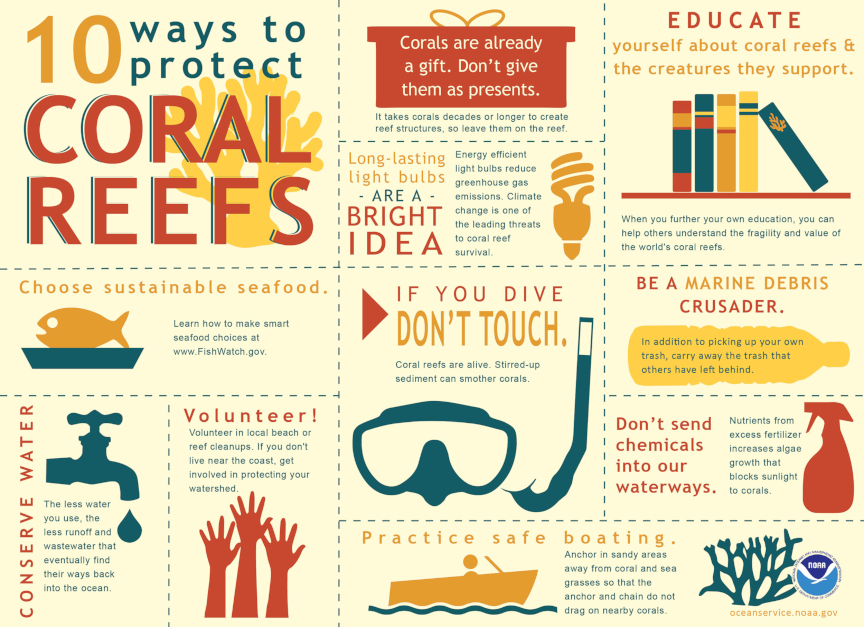
Sources
1: Business Insider: The world's oceans are in even worse shape than we thought https://www.businessinsider.com/new-studies-show-oceans-losing-oxygen-rapid-coral-bleaching-2018-1
2: National Oceanic and Atmospheric Administration / The Coral Reef Conservation Program: What are Coral Reefs https://www.coris.noaa.gov/about/what_are/
3: Nature Communications: "The effectiveness of coral reefs for coastal hazard risk reduction and adaptation" https://www.nature.com/articles/ncomms4794
4: SBS NEWS Australia: Global coral bleaching five times greater than 1980s: study https://www.sbs.com.au/news/global-coral-bleaching-five-times-greater-than-1980s-study
Watch the video about our day at the coral restoration project on Youtube.



